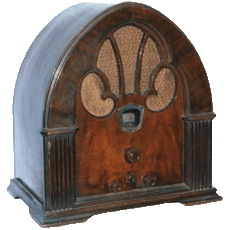I've just started restoring this radio. I have a schematic, and while checking tubes discovered an unknown tube that might be hand-marked as a 7B6 where the schematic shows the 6SQ7GT should go. I have a 6SQ7GT but it won't fit in the socket. Did Philco change the schematic on earlier/later models? Can anyone explain this?
Thanks!
Posts: 94
Threads: 3
Joined: May 2010
City: Albuquerque, NM
The 7B6 is the loctal equivalent of the octal 6SQ7GT. They are both twin diode hi-mu triodes.
The pin out is different also. Does it look like the socket was replaced and rewired or original?
The schematic does show the 6SQ7GT. This chassis does employ a lot of the 7 series tubes. Possible that Philco ran out of 6SQ7GT's and/or decided to use up their stock of 7B6's?
More than likely it was changed out at some point by someone who did not have a 6SQ7GT around!
The radio should work well with either.
JR
Thank you for the reply. It doesn't look like the socket has been replaced, so you must be right. I really had no idea what I was up against here.
Gary
Posts: 2,128
Threads: 18
Joined: Oct 2008
City: Merrick, Long Island, NY
Agreed.
Actually for the same vintage, I'd vote for the 7B7. Other than corrosion of the pins (which can be scraped clean,) and the fragility of the sockets (bend toward the nipple on the base of the tube to remove,) the loctal tubes were and are very reliable. Anyway it shouldn't be hard to scare up another one if you need it.
Posts: 1,703
Threads: 55
Joined: Sep 2005
City: Evanston, IL
In the Philco Production Change Notice PR-1576, dated 5-15-48, it states:
48-482
"Correction to schematic: The AM detector, AVC, and first audio amplifier
tube should be type 7B6, instead of type 6SQ7GT as shown [in original schematic]."
Chuck
Posts: 717
Threads: 30
Joined: Feb 2008
City: Grand Rapids, MI
codefox1 Wrote:Agreed.
Actually for the same vintage, I'd vote for the 7B7.
Yes, 7B7 types aren't hard to find. I think find a tube dot com has them for a reasonable price. I saw one on ebay, and a 7B6 for $22 ea. Way too much. Around here they seem to pop up like crazy.



![[-] [-]](https://philcoradio.com/phorum/images/bootbb/collapse.png)


